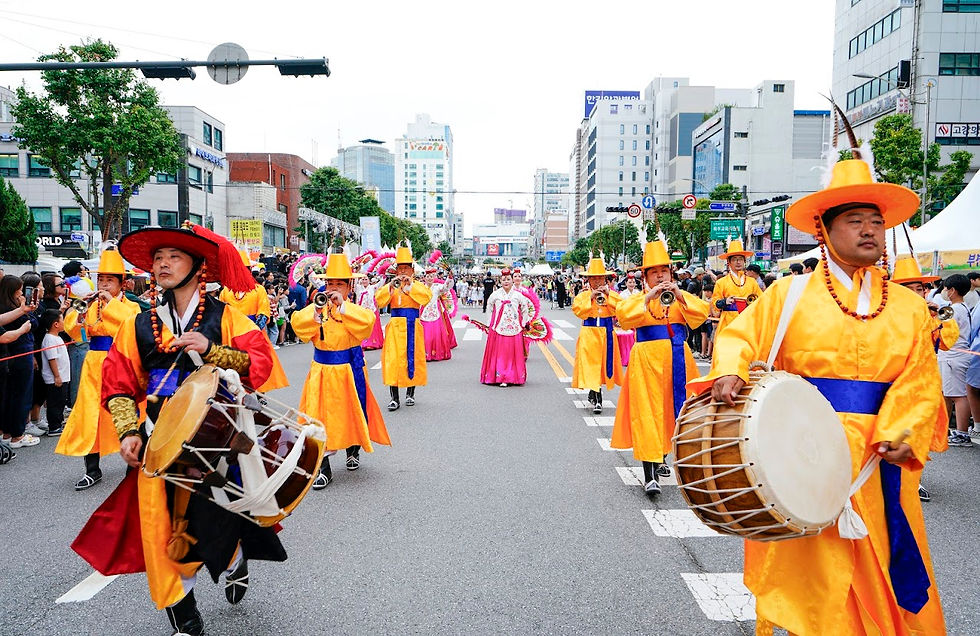Nongak Festival in Korea: Celebrating Traditional Music, Dance, and Cultural Heritage
- Seung-Kook Kim

- Sep 19, 2024
- 2 min read


'Nongak' is a treasured aspect of Korean cultural heritage, celebrated for its artistic and communal significance. Originating in Korea's ancient farming societies, Nongak is a multifaceted performance art that aims to promote community harmony, ensure the well-being of villagers, ward off misfortune, and alleviate the burdens of agricultural labor through collective artistic expression.

Nongak, also known by various names such as 'Pungmul', 'Pungmulgut', and 'Pungjanggut', is a comprehensive folk art form that includes percussion instruments like the kkwaenggwari, gong, janggu, drum, and sogo, along with dance, songs like binari and Gosa-Sori, and theatrical elements such as witticisms and varied costumes. Despite regional variations, all forms share a common purpose of fostering communal solidarity and spiritual well-being.

The term 'Nongak' encompasses various regional practices. For instance, 'Honam Jwado Nongak' refers to the form practiced in the mountainous areas of northeastern Jeolla Province, while 'Honam Udo Nongak' is associated with the southwestern region. 'Yeongnam Nongak' is prevalent in Gyeongsangnam-do, 'Utdari Nongak' in Chungcheongnam-do and Gyeonggi-do, and 'Gangneung Nongak' in the Yeongdong region. Each type has distinct features and purposes, ranging from prayers for the village to performances intended to entertain.

During the Japanese occupation, the term 'Nongak' was promoted over 'Pungmul-gut' as part of an effort to suppress Korean folk beliefs and traditions. Post-liberation, Nongak was officially recognized and preserved as part of Korea's intangible cultural heritage. In 2014, it was inscribed on UNESCO's Representative List of the Intangible Cultural Heritage of Humanity as 'Nongak: Community Band Music, Dance, and Rituals of the Republic of Korea'.

The debate continues over the use of the term 'Nongak', with some advocating for a return to the original term 'Pungmul' to better reflect its traditional roots. Despite this, 'Nongak' remains a vibrant and widely practiced art form across Korea, celebrated for its integration of music, ritual, dance, and theater.

Festivals celebrating Nongak are held throughout Korea, including in cities like Jinju, Gumi, Gimcheon, Iksan, Gwangju, Wonju, Bupyeong, Pyeongtaek, Gwangmyeong, and Dongducheon. The largest of these is the Bupyeong Pungmul Grand Festival, recognized as a representative festival by the Ministry of Culture, Sports and Tourism.
This year's '2024 Bupyeong Pungmul Grand Festival' will take place from September 27 to 29 in the Bupyeong-daero and Sintri Park area, attracting around 500,000 visitors including tourists from across the nation. The festival will feature creative folk performances, a grand parade, flash mobs, opening and closing ceremonies, traditional performances, and various exhibitions and interactive experiences.
For an immersive experience of Korea's vibrant Nongak tradition, the '2024 Bupyeong Pungmul Festival' is not to be missed!




Comments